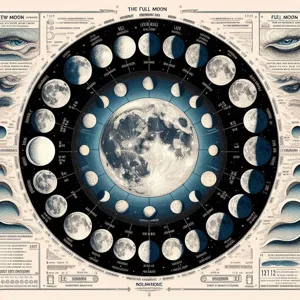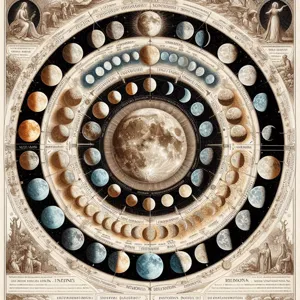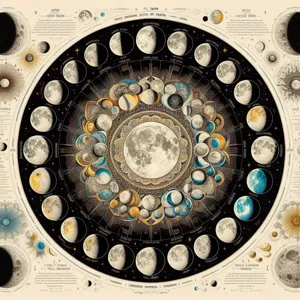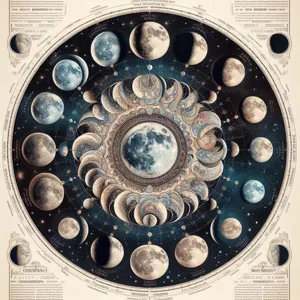As twilight blankets the horizon and the stars begin to twinkle, the vast expanse of the night sky transforms into a canvas of wonder and possibility.
Among the myriad of celestial bodies, one star stands out with a brilliance and significance that has captivated humanity for centuries: the North Star, or Polaris. This steadfast beacon has served as a navigation guide for explorers, a symbol of hope for travelers, and a muse for poets and dreamers alike. Its position nearly aligned with the Earth’s North Pole makes it a reliable point of reference for those seeking direction in both the physical and metaphorical sense. In this blog post, we will delve into the rich history and cultural significance of the North Star, exploring its role in navigation, its representation in folklore, and its enduring place in the hearts of stargazers around the globe. Join us on this celestial journey as we uncover the mysteries and marvels of this luminous guide in the night sky.
1. Introduction to the Night Sky

As the sun dips below the horizon and twilight blankets the earth, the night sky unveils a celestial tapestry that has captivated humanity for centuries. With its vast expanse dotted with shimmering stars, the night sky invites us to gaze upward and ponder the mysteries of the universe. Each twinkling light holds a story, a point of reference, and often a sense of wonder. For ancient civilizations, the stars were not merely distant suns; they were guides and guardians, illuminating the path for travelers and inspiring mythologies.
In this cosmic canvas, the North Star, or Polaris, stands out as a beacon of stability and direction. Unlike its wandering counterparts, Polaris remains fixed in the northern sky, serving as a reliable guide for navigators and explorers alike. Its importance transcends mere navigation; it symbolizes hope, constancy, and the quest for discovery. As we delve into the significance of the North Star, we will explore not only its role in navigation but also its impact on cultures, history, and our ongoing relationship with the cosmos. Join us on this journey as we unlock the secrets of the night sky and discover why the North Star has earned its place as a cherished celestial landmark.
2. What is the North Star? An Overview
The North Star, also known as Polaris, is a celestial gem that has guided travelers and stargazers for centuries. Located nearly directly above the North Pole, Polaris is a part of the constellation Ursa Minor, commonly referred to as the Little Dipper. Its unique position in the sky makes it a crucial reference point for navigation, particularly in the Northern Hemisphere.
What truly sets the North Star apart is its remarkable stability. Unlike many other stars that shift and twinkle, Polaris remains almost motionless in the night sky. This is due to its alignment with the Earth’s rotational axis, making it a reliable beacon for those seeking direction. For ancient navigators, Polaris was a key to finding their way across vast, uncharted waters, while for modern-day campers and hikers, it serves as a trusty guide for orienting themselves in the wilderness.
Polaris is not just significant for its navigational qualities; it is also a fascinating star in its own right. It is a supergiant star, approximately 2,500 times more luminous than our Sun, and is situated about 433 light-years away from Earth. Its brightness and distinct position make it easily recognizable, even in light-polluted urban skies.
The North Star has also woven itself into the fabric of human culture and history. It has been a symbol of hope and guidance, frequently referenced in literature, songs, and folklore. As you gaze up at Polaris, you’re not just looking at a star; you’re connecting with a timeless legacy that has inspired countless generations to navigate both the physical and metaphorical night skies of their lives.
3. Historical Significance of the North Star in Navigation

The North Star, or Polaris, has held a profound significance in navigation throughout history, serving as a steadfast beacon for countless travelers and explorers. Its unique position nearly directly above the North Pole makes it an invaluable reference point in the night sky. For ancient navigators, especially those traversing the vast oceans, Polaris provided a reliable means of determining direction, guiding them through uncharted waters with remarkable precision.
In the age of exploration, mariners from various cultures relied on the North Star to chart their courses. As they sailed under its gentle glow, they could maintain their bearings, ensuring they remained on the right path even when the horizon disappeared into darkness. The North Star’s unwavering position amidst the rotating celestial sphere meant that sailors could find true north with ease, allowing them to navigate vast distances while minimizing the risk of getting lost.
Beyond maritime navigation, Polaris also played a crucial role on land. Indigenous peoples and early settlers utilized the star for orientation, using its fixed position to align their routes during long journeys across unfamiliar terrain. For many, it became a point of cultural significance, symbolizing guidance, hope, and a sense of direction in both literal and metaphorical senses.
As we delve into the annals of history, it becomes clear that the North Star was more than just a celestial object; it was a lifeline for explorers seeking new horizons. Today, even in the face of modern technology and GPS systems, the North Star endures as a reminder of humanity’s enduring connection to the cosmos, illustrating how a single star can illuminate the paths of countless adventurers throughout time.
4. The Science Behind the North Star: Polaris Explained
When we gaze up at the night sky, one star often stands out among the rest: Polaris, commonly known as the North Star. Its significance stretches far beyond just being a celestial beacon for travelers; it is steeped in science and wonder. Polaris is located nearly at the celestial North Pole, making it the focal point around which the night sky appears to rotate. This unique position is what has earned it the title of “guiding star” for centuries.
But what exactly is Polaris? Scientifically, it is classified as a multiple star system, consisting of at least three stars, with the primary component being a supergiant star approximately 2,500 times brighter than our Sun. This intense brightness makes it easily visible even in light-polluted urban skies. Polaris is around 430 light-years away from Earth, and its light journeying across the cosmos is a reminder of the vastness of our universe.
Moreover, Polaris is not a fixed star in the truest sense. While it appears stationary in the night sky due to its alignment with Earth’s rotational axis, it does experience a gradual shift over millennia known as precession. This means that while it has been our North Star for centuries, it was not always so; thousands of years ago, other stars held that title, and over time, the mantle of guiding light will shift once again.
Understanding the science behind Polaris not only deepens our appreciation for this remarkable star but also highlights the dynamic nature of our universe. For navigators, astronomers, and those simply seeking the comfort of a familiar light in the darkness, Polaris continues to shine as a symbol of direction and stability in an ever-changing cosmos.
5. How to Locate the North Star in the Night Sky

Locating the North Star, also known as Polaris, is a rewarding experience that can enhance your appreciation of the night sky. It serves as a celestial guidepost, helping travelers and stargazers alike find their way. The first step to identifying Polaris is to find the Big Dipper, one of the most recognizable constellations.
look towards the northern horizon. The Big Dipper consists of seven bright stars that form a shape reminiscent of a ladle. focus on the two stars that form the edge of the “bowl” of the Dipper—these are known as Dubhe and Merak. By drawing a straight line upward through these two stars, you will be directed to Polaris. This star is the last star in the handle of the Little Dipper, which is less prominent but can be found nearby.
Polaris is unique in its position; it sits almost directly aligned with the North Celestial Pole. This means that as the Earth rotates, Polaris remains relatively stationary in the sky, making it an excellent reference point. On a clear night, you can spot Polaris shining with a steady light, unlike many other stars that twinkle.
To further enhance your stargazing experience, try to find Polaris on different nights, observing how its position may shift slightly due to the Earth’s rotation. As you become more familiar with the surrounding stars and constellations, you will find it easier to locate the North Star, enhancing your navigation skills and deepening your connection to the cosmos. With practice, locating Polaris will become second nature, guiding you not only through the night but also inspiring a sense of wonder about the universe above.
6. The Role of the North Star in Different Cultures
The North Star, known as Polaris, has held a special place in the hearts and minds of various cultures throughout history. Its unwavering position in the night sky has made it a vital navigational tool for countless civilizations, but its significance extends far beyond mere geography. Across different cultures, the North Star has woven itself into the fabric of myth, legend, and spirituality.
In ancient Egypt, the North Star was associated with the god Osiris, symbolizing resurrection and the afterlife. The Egyptians constructed their pyramids with a keen alignment to celestial bodies, and Polaris served as a point of reference in their complex understanding of the cosmos. As such, it was not just a guide for travelers, but also a beacon of hope for those seeking to understand the mysteries of life and death.
Similarly, in Native American culture, the North Star is often viewed as a spiritual guide. Many tribes regard it as a symbol of guidance and direction, a constant presence that offers comfort and assurance. The Lakota Sioux, for example, refer to it as “the star that does not move,” representing stability and the spirit of guidance for those on their life journeys. This connection to the North Star emphasizes the importance of finding one’s path, both literally and metaphorically.
In contrast, the ancient Greeks named the North Star after the mythological figure of Tyche, the goddess of fortune and prosperity. For them, Polaris was not only a reliable marker for sailors navigating the Mediterranean but also a symbol of good luck and favorable outcomes. This duality of practical utility and symbolic meaning highlights the multifaceted nature of the North Star across cultures.
In the modern era, the North Star continues to inspire. Its role in guiding runaway slaves to freedom during the Underground Railroad in the United States is a poignant reminder of resilience and hope. The phrase “Follow the North Star” became a rallying cry for those seeking liberation, illustrating how Polaris transcends its celestial status to embody ideals of freedom and perseverance.
As we navigate our own lives, the North Star serves as a powerful reminder of the interconnectedness of humanity. It invites us to look up and seek guidance from the stars, drawing us together through our shared admiration for this enduring celestial companion. Whether viewed through the lens of mythology, spirituality, or history, the North Star remains a timeless symbol of navigation, hope, and the quest for understanding in the vast tapestry of human experience.
7. The North Star and Celestial Navigation Techniques
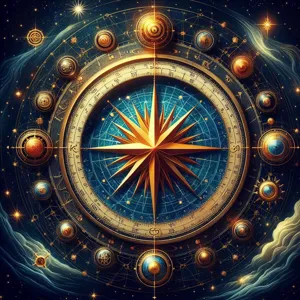
The North Star, or Polaris, has played a crucial role in celestial navigation for centuries, serving as a steadfast beacon for mariners, explorers, and travelers alike. Located almost directly above the North Pole, it is uniquely positioned to remain relatively fixed in the sky, making it an invaluable reference point for those seeking their way in the darkness.
Celestial navigation techniques that utilize the North Star are based on the concept of angular measurement. By determining the altitude of Polaris above the horizon, navigators can calculate their latitude with remarkable accuracy. For instance, if a sailor observes that the North Star is 30 degrees above the horizon, they can infer that they are situated at a latitude of approximately 30 degrees north. This method not only provides a sense of direction but also allows navigators to chart their course across vast oceans or uncharted territories.
Beyond its practical applications, the North Star has also woven itself into the cultural fabric of navigation. Ancient mariners relied on it to guide their journeys across treacherous waters, while land-based travelers used its position to orient themselves during nighttime voyages. The reliability of this celestial guide has earned it numerous names across different cultures, each reflecting the star’s significance in guiding humanity through the darkness.
In modern times, while GPS and digital navigation tools have taken precedence, the North Star remains a symbol of timeless navigation wisdom. For enthusiasts and amateur astronomers, learning to locate Polaris and using it in conjunction with other stars in the night sky opens up a deeper understanding of celestial navigation. It serves as a reminder that, even in an age dominated by technology, the wonders of the cosmos continue to offer guidance and inspiration, connecting us to the navigators of the past who looked up at the same starry sky.
8. The North Star as a Symbol of Guidance and Hope
The North Star, known scientifically as Polaris, has long been revered not just for its astronomical significance but also for its role as a beacon of guidance and hope throughout history. For centuries, travelers and explorers have relied on its unwavering presence in the night sky to navigate their journeys, using its consistent position to find their way in a world often shrouded in darkness. This steadfast star, situated nearly directly above the North Pole, has served as a celestial compass, offering direction to those who seek it.
Beyond its practical utility, the North Star carries profound symbolic weight in various cultures and traditions. It represents a guiding light, a reminder that even in the most tumultuous times, there is a point of reference that can lead one safely home. For many, it embodies the enduring belief that hope is never out of reach, urging them to persevere through life’s challenges.
In literature and art, the North Star often appears as a metaphor for aspiration and dreams. Poets and writers have invoked its imagery to illustrate the human struggle for purpose and the desire to find one’s place in the universe. Its brilliance in the night sky serves as an emblem of resilience, a promise that even when the path seems obscured, there exists a guiding force that illuminates the way.
For those gazing up at the night sky, the North Star is more than just a point of light; it is a reminder of the journeys undertaken, the hopes held dear, and the dreams yet to be realized. It invites us to reflect on our own life paths, urging us to seek our true north in the vast expanse of possibilities that lie before us. In a world that often feels chaotic and uncertain, the North Star stands as a steadfast symbol of guidance and hope, encouraging us to navigate our own journeys with confidence and clarity.
9. Myths and Legends Surrounding the North Star
The North Star, known as Polaris, has long captured the imaginations of cultures around the world, inspiring a tapestry of myths and legends that reflect humanity’s deep connection to the night sky. This steadfast beacon, sitting almost directly above the North Pole, has served as a guiding light for countless travelers and navigators throughout history, but its significance extends far beyond mere navigation.
In ancient Egypt, the North Star was associated with the goddess Isis, symbolizing hope and guidance. Egyptians believed that the souls of the deceased navigated by Polaris to reach the afterlife, making it a vital part of their spiritual beliefs. Similarly, in Norse mythology, the North Star was linked to the gods and was thought to represent the soul of the warrior. Vikings relied heavily on this celestial marker to guide their longships across uncharted waters, weaving tales of heroic voyages that inspired generations.
In Native American cultures, the North Star often appeared in folklore, representing guidance and steadfastness. The Lakota Sioux viewed it as a symbol of the spirit of the Great Plains, while other tribes told stories of how it served as a compass for lost souls seeking their way home. These narratives not only highlight the star’s navigational importance but also its role as a metaphor for resilience and hope.
Moreover, the North Star has appeared in literature and art, symbolizing aspiration and dreams. Poets and writers have drawn on its imagery to evoke feelings of longing and the pursuit of one’s path in life. Its constant presence in the night sky reassures us that, despite the chaos of the world below, there is always a point of reference—a reminder to remain steadfast in our journeys.
As we explore the night sky, the myths and legends surrounding the North Star remind us of the profound ways in which this celestial body has shaped human experience. It is not just a star; it is a symbol of guidance, hope, and the enduring spirit of exploration that connects us all.
10. The North Star’s Changing Position Over Time
The North Star, or Polaris, has long been celebrated for its unwavering presence in the night sky, serving as a steadfast guide for navigators and stargazers alike. However, what many may not realize is that Polaris has not always held its prominent position at the end of the Little Dipper’s handle. Its significance is further deepened by the fact that its location in the celestial sphere is not as constant as it seems.
Over centuries, the North Star has shifted due to the phenomenon known as axial precession, which occurs as the Earth wobbles on its axis. This slow, circular motion—similar to a spinning top—takes about 26,000 years to complete a full cycle. As a result, Polaris is currently positioned nearly at the north celestial pole, but this was not always the case. In ancient times, other stars, such as Thuban in the constellation Draco, held the title of “North Star.”
As we look to the future, Polaris will gradually drift away from this pivotal point. In approximately 14,000 years, the star Vega will take its turn as the North Star, marking a significant shift in the celestial navigation landscape. This fascinating aspect of Polaris reminds us that while some constants in our lives may feel unchanging, the universe is in a perpetual state of flux.
Understanding the North Star’s changing position offers not only a glimpse into the mechanics of our universe but also a metaphor for our own journeys. Just as navigators have relied on Polaris for direction through the ages, we too must adapt and recalibrate our paths in response to the ever-evolving nature of our lives and the world around us. Embracing these changes, much like ancient mariners did under the twinkling stars, can lead to new adventures and insights as we navigate our own night skies.
11. Using the North Star for Stargazing and Astronomy
The North Star, also known as Polaris, is a beacon for stargazers and amateur astronomers alike, serving as a celestial guidepost in the vast expanse of the night sky. Its unwavering position nearly directly above the North Pole makes it an invaluable tool for navigation and orientation, as well as a point of reference for identifying other constellations and celestial bodies.
When embarking on a stargazing adventure, the North Star can help you locate key constellations. For instance, once you’ve found Polaris, you can easily spot the Little Dipper, which is composed of the stars surrounding it. By extending your gaze further, you’ll come across the Big Dipper, whose familiar shape can lead you to other prominent constellations like Cassiopeia and Cepheus. These constellations are not merely beautiful arrangements of stars; they hold stories and mythologies that have been passed down through generations, enriching your stargazing experience.
For budding astronomers, knowing how to navigate using the North Star opens up a world of possibilities. It enables you to orient your telescope accurately, ensuring that you can observe planets, star clusters, and nebulae with ease. The North Star is particularly useful during the changing seasons, as its location remains relatively constant while other stars shift in position. This stability allows you to track seasonal celestial changes and plan your observations accordingly.
Moreover, for those interested in astrophotography, Polaris serves as a perfect reference point for long-exposure shots of the night sky. By centering your camera on the North Star, you can capture stunning star trails that arc gracefully across the frame, creating mesmerizing patterns that showcase the Earth’s rotation. The North Star isn’t just a navigational aid; it can also inspire creativity and wonder as you capture the beauty of the cosmos.
In summary, the North Star is more than just a stationary point in the sky; it is an essential tool for stargazing and astronomy. Whether you’re charting constellations, honing your observational skills, or capturing the night sky through your lens, Polaris provides the guidance and inspiration needed to explore the universe around us. So, the next time you step outside on a clear night, take a moment to locate this remarkable star and let it lead you on a celestial journey.
12. The North Star in Literature and Art
The North Star, or Polaris, has long captivated the human imagination, serving as a guiding light not only in the physical realm but also in the realms of literature and art. Its unwavering position in the night sky has inspired countless authors, poets, and artists to draw parallels between its steadfastness and the human experience. In literature, the North Star often symbolizes hope, guidance, and constancy. Writers have used it as a metaphor for the pursuit of dreams and aspirations, illustrating how, like travelers navigating by its glow, individuals can find direction amidst the chaos of life.
In poetry, the North Star frequently emerges as a symbol of love and longing. Poets have evoked its brilliance to express feelings of devotion, comparing their loved ones to the bright beacon that offers comfort and clarity. The imagery of the North Star—radiant, unchanging, and eternal—serves to evoke a sense of nostalgia and reverence, reminding readers of the enduring nature of love and connection.
The influence of the North Star extends into the visual arts as well. Artists throughout history have depicted it in various forms, using its luminous presence to convey themes of exploration and adventure. From classic star maps to modern abstract interpretations, the North Star has been portrayed as a source of inspiration, a point of reference that invites viewers to reflect on their own journeys. Whether captured in a serene night landscape or as part of a grand celestial scene, its iconic image resonates with themes of guidance and aspiration.
In both literature and art, the North Star serves as a powerful reminder of our innate desire to seek direction and purpose in our lives. Its presence invites us to look up, to dream, and to navigate our own paths, encouraging us that no matter how dark the night may seem, there is always a light to guide us home.
13. Modern Navigation: The North Star’s Relevance Today
In an age dominated by GPS technology and advanced navigation systems, one might wonder about the relevance of the North Star, or Polaris, in modern navigation. Yet, this celestial beacon continues to hold important significance, both as a symbol of guidance and a practical tool for orientation.
The North Star, located nearly directly above the North Pole, serves as a constant point in the sky, steadfastly marking true north. For centuries, sailors, explorers, and travelers have relied on its unwavering presence to navigate the vast and often treacherous seas and lands. While today’s technology has made navigation more accessible and precise, the North Star remains a critical reference point for those venturing into the great outdoors—be it hikers traversing unmarked trails or campers in the wilderness looking to find their way back to a familiar spot.
In recent years, there has been a resurgence of interest in traditional navigation techniques, spurred by a growing appreciation for nature and self-sufficiency. Outdoor enthusiasts and survivalists have rediscovered the ancient art of celestial navigation, where the North Star acts as both a guide and a reminder of the natural world. Its bright, unwavering light offers comfort and reassurance, particularly in unfamiliar territories where modern devices may fail due to dead batteries or lack of signal.
Moreover, the North Star’s significance extends beyond practical navigation. It has become a cultural symbol of hope, perseverance, and direction, inspiring countless works of art, literature, and philosophy. In a world that often feels chaotic and disorienting, the North Star serves as a metaphorical anchor—a reminder that, even amidst uncertainty, there is always a fixed point to guide us home.
Whether you’re out in the wilderness, reflecting on life’s journey, or simply stargazing from your backyard, the North Star remains a timeless source of inspiration and navigation, reminding us of our connection to the cosmos and the enduring quest for direction in our lives.
14. Tips for Stargazing: Best Practices for Observing the Night Sky
Stargazing is one of the most enchanting activities you can engage in, connecting you with the cosmos in a way that few experiences can replicate. To truly make the most of your night under the stars, here are some best practices that will enhance your observation experience and deepen your appreciation for the celestial wonders above.
**1. Choose the Right Location:**
Finding a dark spot far from city lights is crucial for optimal stargazing. Light pollution can wash out the beauty of the night sky, obscuring fainter stars and celestial objects. Seek out parks, rural areas, or designated stargazing sites where the sky is darkest. The less interference from artificial light, the more stars you will be able to see.
**2. check the Weather:**
Clear skies are essential for a successful stargazing session. Before heading out, check the weather forecast to ensure that clouds or rain won’t obstruct your view. A crisp, clear night after a day of sunshine often provides the best conditions for visibility.
**3. Allow Your Eyes to Adjust:**
When you arrive at your stargazing location, give your eyes time to adjust to the darkness—about 20 to 30 minutes is ideal. Avoid looking at bright screens or lights during this time, as they can hinder your night vision. The longer you stay in the dark, the more stars will reveal themselves.
**4. Bring the Right Gear:**
While you can certainly enjoy stargazing with the naked eye, a few tools can enhance your experience. Binoculars are portable and easy to use, allowing you to see details of the moon and some star clusters. For a deeper dive, consider a telescope, but remember that it requires a bit more setup and knowledge to navigate the skies effectively.
**5. Use Stargazing Apps:**
In this digital age, many apps can turn your smartphone into a powerful stargazing tool. These apps can help you identify constellations, planets, and other celestial phenomena by simply pointing your phone at the sky. They can make your experience more interactive and informative, turning a casual observation into an engaging learning opportunity.
**6. Bring a Blanket and Snacks:**
Stargazing is as much about the experience as it is about the astronomy. Bring a cozy blanket to lie on and some snacks to enjoy while you marvel at the universe. This will make your stargazing session more comfortable and enjoyable, encouraging you to linger longer under the stars.
**7. Join a Stargazing Community:**
Consider joining local astronomy clubs or online communities. These groups often host star parties where enthusiasts gather to share knowledge, equipment, and experiences. Learning from others can enrich your stargazing journey and provide you with insider tips on the best times and places to observe the night sky.
By following these best practices, you’ll not only enhance your stargazing experience but also foster a deeper connection with the universe. So grab your gear, find a dark spot, and prepare to be amazed by the breathtaking sights that await you in the night sky.
15. Conclusion: Embracing the Beauty and Significance of the North Star
As we draw our exploration of the North Star to a close, it becomes abundantly clear that this celestial beacon is far more than just a distant point of light in the vast expanse of the night sky. The North Star, or Polaris, holds a unique significance, steeped in history, navigation, and even inspiration. For centuries, it has served as a reliable guide for travelers and navigators, a steadfast reference that has illuminated paths across uncharted waters and rugged landscapes. Its unwavering position in the northern sky has offered a sense of stability in an ever-changing world—a reminder that there are constants amidst the chaos.
But the North Star’s importance extends beyond its practical uses; it invites us to reflect on our place in the universe. Gazing up at Polaris can evoke feelings of wonder and connectedness, sparking our imaginations and encouraging us to dream. It serves as a symbol of hope and direction, guiding us not just in our physical journeys but also in our personal quests for purpose and meaning.
As we embrace the beauty and significance of the North Star, let it inspire a deeper appreciation for the natural world. Whether you are an avid stargazer, a seasoned navigator, or someone simply curious about the night sky, the North Star offers a moment of pause—a chance to contemplate the mysteries that lie above. So, the next time you find yourself under a blanket of stars, take a moment to seek out Polaris. Let its radiant light remind you of the journeys you’ve undertaken, the dreams you aspire to achieve, and the infinite possibilities that await you in the great tapestry of the cosmos.
As we conclude our exploration of the North Star, it becomes clear that this celestial beacon holds a significance that transcends mere navigation. From its role in guiding ancient mariners across uncharted waters to its symbolism of hope and steadfastness in various cultures, the North Star serves as a reminder of our connection to the universe and the constancy of nature. Whether you’re an avid stargazer or a curious beginner, understanding the importance of the North Star enriches your experience of the night sky, inviting you to look up and marvel at the wonders above. So, the next time you find yourself outdoors under a blanket of stars, take a moment to locate Polaris and reflect on the stories it carries through time. Happy stargazing!









